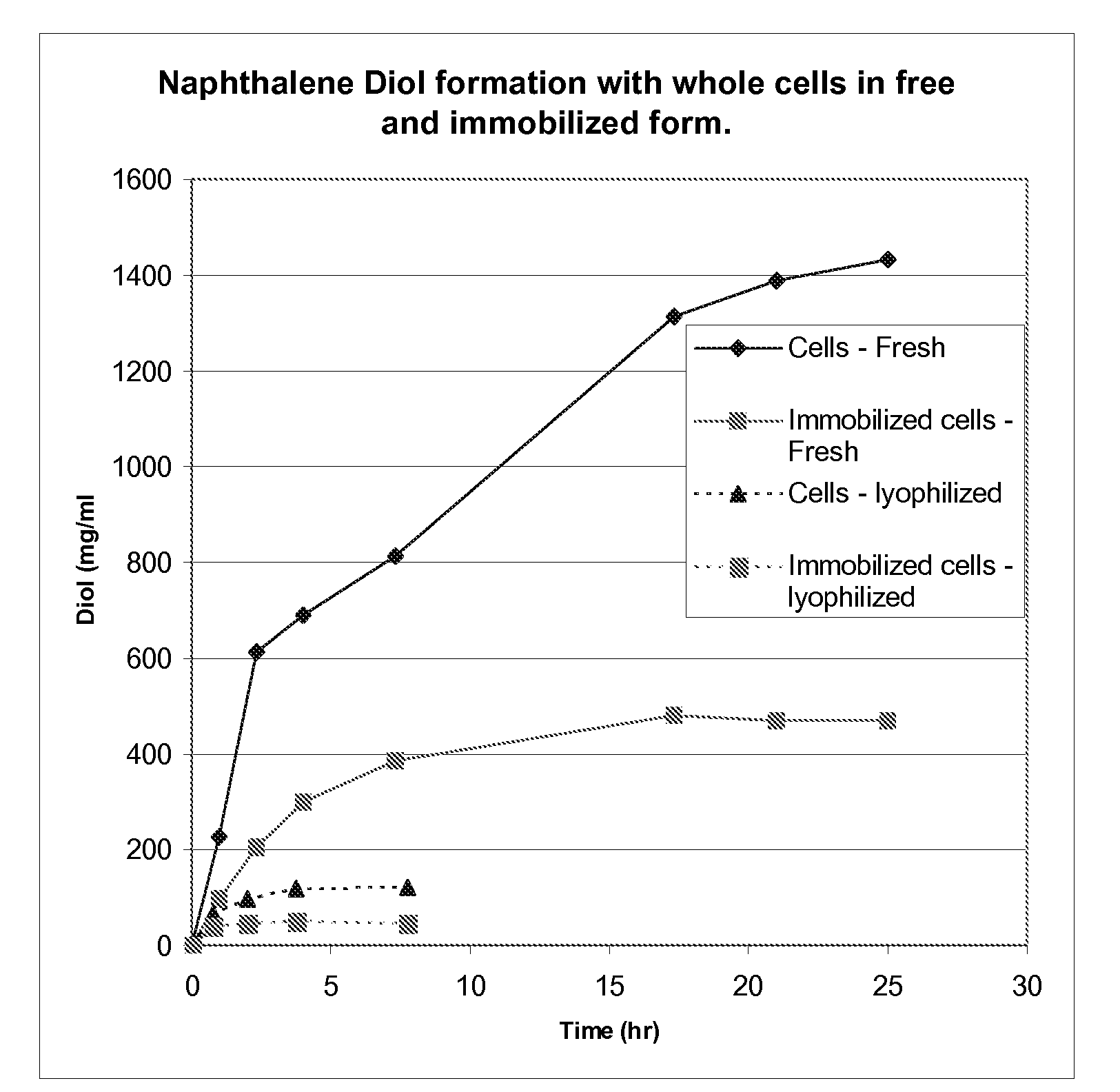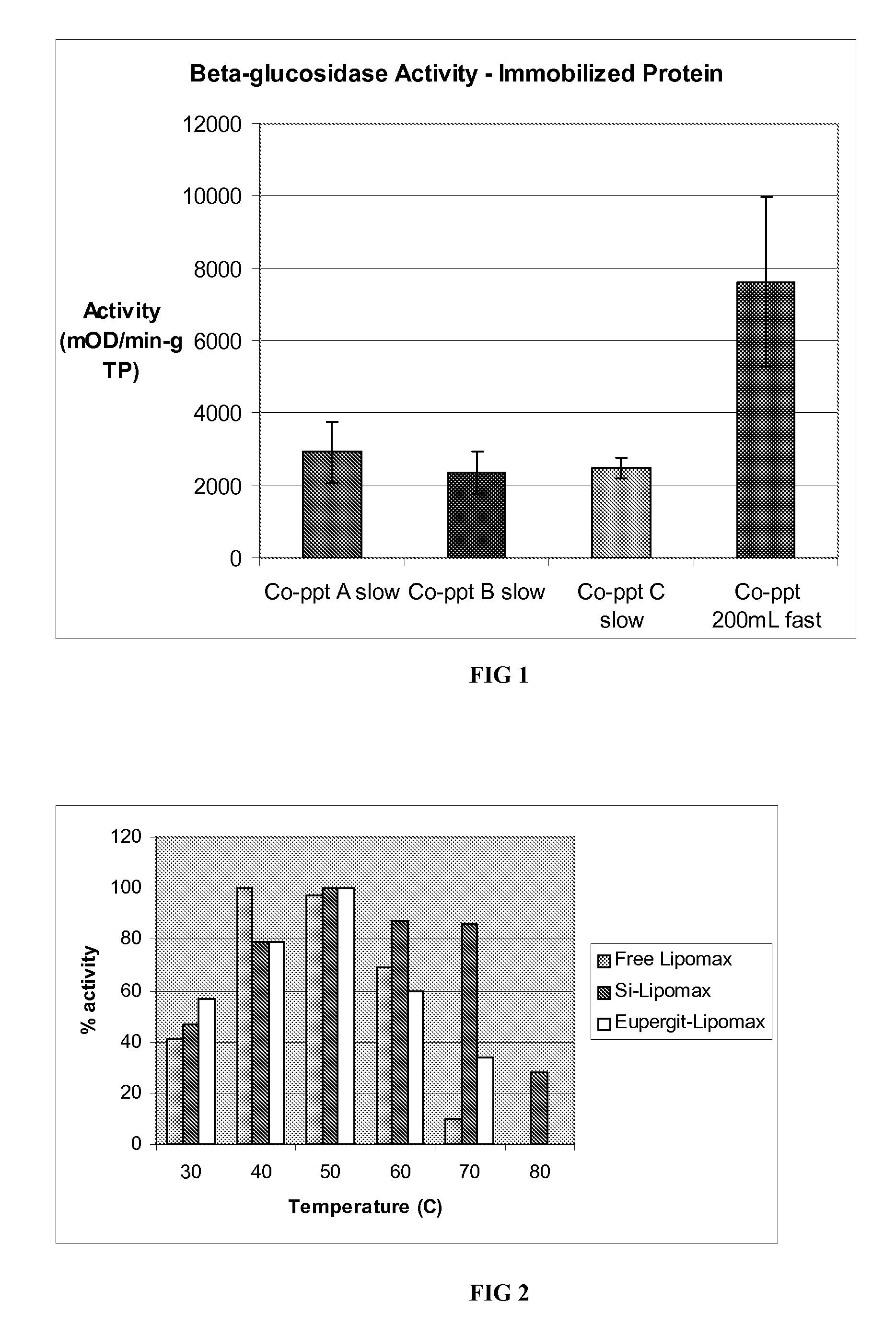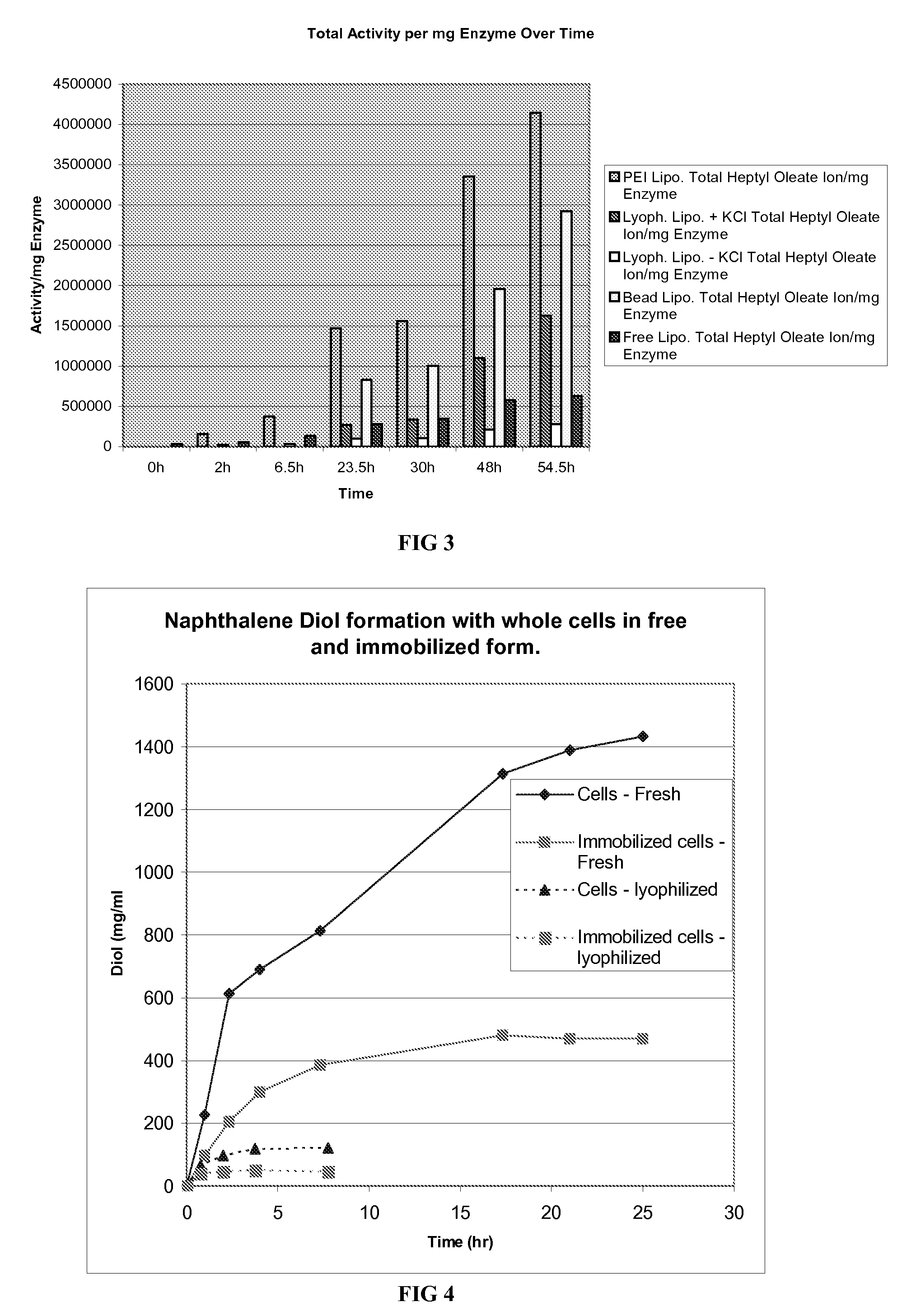Immobilization of biocatalysts by template-directed silicate precipitation
a biocatalyst and template-directed technology, applied in the field of biocatalyst immobilization process, can solve the problems of biocatalyst leaching, lack of enzymatic and mechanical stability, and high cost of immobilization methods
- Summary
- Abstract
- Description
- Claims
- Application Information
AI Technical Summary
Benefits of technology
Problems solved by technology
Method used
Image
Examples
example a
General Procedures for the Immobilization of Biocatalysts by Co-Precipitation with a Silicate or Organosilicate Through the Action of an Organic Template Molecule
[0062]A silicate sol is prepared through the acid hydrolysis of a tetraalkoxysilane, such as tetraethylorthosilicate (TEOS). An aliquot of the resulting silicate sol is added to either deionized water or a buffer such that the final concentration of the silicate is typically between 10 mM and 1 M, and the pH between 5 and 9. Alternately, a dilute (i.e. 1 M or less) sodium silicate solution is neutralized with an acid to give a silicate solution of concentration and pH as defined above. Such solutions should be used prior to the onset of gelation, a characteristic of the more concentrated silicate solutions, especially those at higher pH. The addition of an biocatalyst solution containing a template molecule, typically at 1-50 mg / mL, to the silicate solution results in the appearance of a white precipitate upon contact of th...
example 1
Preparation of a Silica / PEI / Protease Biocomposite
[0064]The enzyme BPN′Y217L protease (a subtilisin variant) was incorporated into silica using the following procedures.
[0065]A silicate stock solution was prepared by mixing tetraethylorthosilicate (TEOS) (230 μL, 1 mmol), aqueous HCl (10 μL, 100 mM) and deionized water (760 μL) together with moderate agitation for 12 hours. An aliquot of this acid-hydrolyzed TEOS solution (100 μL) was then mixed with 25 mM Tris-HCl buffer (700 μL, pH 8.0) to give a buffered silicate solution.
[0066]A premixed solution containing 100 μL (10 mg / mL) polyethylenimine (PEI) in water and 100 μL (1 mg / mL) BPN′Y217L subtilisin was then added at once to the buffered silicate solution resulting in the immediate production of a white precipitate. The reaction appeared complete in less than 3 minutes. The mixture was then centrifuged at 14,000 g for 15 minutes, discarding supernatant. The precipitate was then vortexed with 1 mL deionized water, centrifuged again,...
example 2
GG36 with R5 Silaffin Template, TEOS Sol
[0067]Gels and precipitates containing the R5 silaffin peptide (Kroger, N. et al., Science, 286: 1129-1132 (1999)) and the enzyme GG36 (a wild type subtilisin protease) in a silica biocomposite were prepared. GG36 subtilisin (2.3 mg, 64% w / w active protein) in Tris-Cl buffer (900 μL, 10 mM) at either pH 7 or pH 8 was prepared. Acid-hydrolyzed TEOS sol (100 μL of 1M) was added to the buffered enzyme. Then R5 silaffin peptide (1.0 mg) was added and the mixture stirred overnight. The reaction mixture was centrifuged at 14000 rpm for 15 min. The supernatant was decanted and the solid washed twice with deionized water. The reaction performed at pH 7 resulted in a gel (smaller particles), and the reaction performed at pH 8 resulting in a precipitate (larger and denser particles). Without the R5 silaffin peptide, the subtilisin enzyme did not produce a precipitate.
PUM
| Property | Measurement | Unit |
|---|---|---|
| pH | aaaaa | aaaaa |
| pH | aaaaa | aaaaa |
| molecular weight | aaaaa | aaaaa |
Abstract
Description
Claims
Application Information
 Login to View More
Login to View More - R&D
- Intellectual Property
- Life Sciences
- Materials
- Tech Scout
- Unparalleled Data Quality
- Higher Quality Content
- 60% Fewer Hallucinations
Browse by: Latest US Patents, China's latest patents, Technical Efficacy Thesaurus, Application Domain, Technology Topic, Popular Technical Reports.
© 2025 PatSnap. All rights reserved.Legal|Privacy policy|Modern Slavery Act Transparency Statement|Sitemap|About US| Contact US: help@patsnap.com



